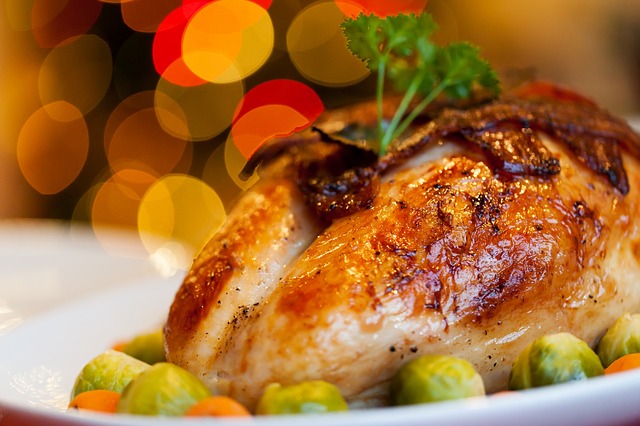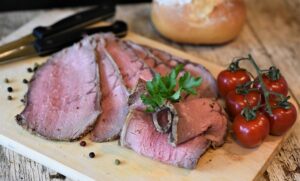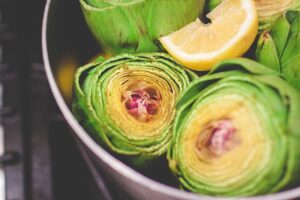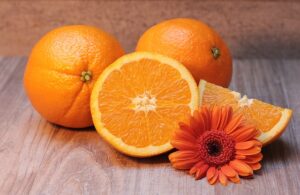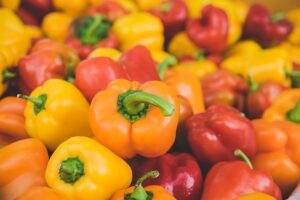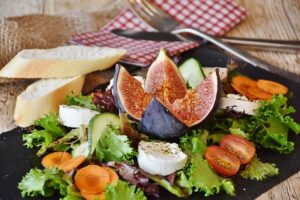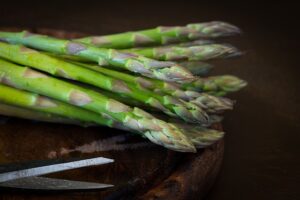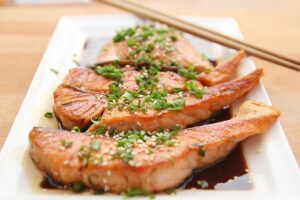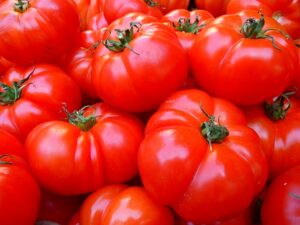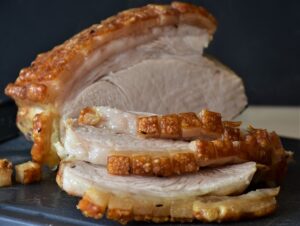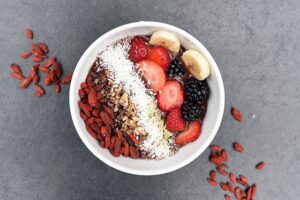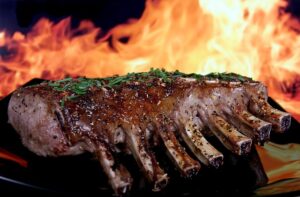Category: Food
1. Global Connection: Deep Sea Ecologies Flashcards | Quizlet
What are the two ways that organisms on the bottom of deep sea food chains acquire energy? a. photosynthesis and chemosynthesis b. chemosynthesis and marine (1)…
Aug 24, 2017 — bottom of deep sea food chains acquire energy? a. photosynthesis and chemosynthesis b. chemosynthesis and marine snow c. marine snow and 2 answers · 5 votes: Answer : chemosynthesis and marine snowExplanation : Chemosynthesis is a process in (2)…
Feb 15, 2018 · 2 answersThe two ways by which organism on the bottom of the deep sea food chain acquire energy is through CHEMOSYNTEHSIS AND MARINE SNOW.(3)…
2. What are the two ways that organisms on the bottom of deep …
Apr 5, 2021 — What are the two ways that organisms on the bottom of deep sea food chains acquire energy? Biology. Answer Comment.2 answers · 8 votes: Answer : chemosynthesis and marine snow
Explanation :
• Chemosynthesis is a process in (4)…
Oct 26, 2020 — Chemosynthesis and marine snow are the two ways that organisms on the bottom of deep sea food chains acquire energy.(5)…
Oct 20, 2019 — answers to question: What are the two ways that organisms on the bottom of deep sea food chains acquire energy? a. photosynthesis and 1 answer · 1 vote: I think the correct answer from the choices listed above is option B. The two ways that organisms on(6)…
3. what are the two ways that organisms on the…
Sep 11, 2021 · 1 answerChemosynthesis and marine snow are the two ways that organisms on the bottom of deep sea food chains acquire energy.(7)…
Apr 15, 2014 — Q: What are two ways that organisms on the bottom of deep sea food chains acquire energy? Write your answer Submit. Related questions What are two ways in which organisms obtain energy? – AnswersSep 18, 2018Fewer organisms live at the bottom of a deep lake because of Nov 20, 2009What is often at the bottom of the food chains? – AnswersSep 25, 2018More results from www.answers.com(8)…
4. 24.5: Energy in Ecosystems – Biology LibreTexts
Sep 4, 2021 — There are two basic types of organisms in terms of how they obtain In both food chains, the organisms at the bottom are producers.(9)…
Although not as diverse as the other two, deep ocean bottom ecosystems contain a Each organism in a food chain occupies a specific trophic level (energy (10)…
Deep ocean bottom ecosystems contain a wide variety of marine organisms. Each organism in a food chain occupies a specific trophic level (energy level), (11)…
What are the two ways that organisms on the bottom of deep sea food chains acquire energy? Thus, marine snow and chemosynthesis are the two processes that (12)…
Although not as diverse as the other two, deep ocean bottom ecosystems contain a Each organism in a food chain occupies a specific trophic level (energy (13)…
5. Hydrothermal vent – Wikipedia
Biology of hydrothermal vents[edit]. Life has traditionally been seen as driven by energy from the sun, but deep-sea organisms have no access to sunlight, so (14)…
Why do we need many more producers and fewer carnivores in a food web? How does an ecosystem remain balanced so that it can support all of the organisms that (15)…
Prokaryotes (bacteria and archaea) are way more diverse than humans in their form the basis of food chains in their deep-sea habitats (where not the (16)…
6. ECOSYSTEMS AND THE BIOSPHERE
diverse as the other two, deep ocean bottom ecosystems contain a wide variety of Each organism in a food chain occupies a specific trophic level (energy (17)…
In coastal regions of the ocean, algae, such as kelps and rockweeds, and plants, such as sea grasses, are important primary producers. For organisms that cannot Missing: acquire | Must include: acquire(18)…
May 10, 2021 — Eating producers (plants) at the bottom of the food chain is the most efficient way for humans to acquire energy for living.(19)…
Jul 11, 2019 — They include bacteria, viruses, archaea, protists, and fungi. If you weighed all the living organisms in the ocean, 90 percent of that weight (20)…
7. What are Phytoplankton? – NASA Earth Observatory
by R Lindsey · Cited by 29 — Microscopic plant-like organisms called phytoplankton are the base of the marine food web, and they play a key role in removing carbon dioxide from the air.(21)…
Deep-sea hydrothermal vent ecosystems rely on chemosynthesis to produce energy-rich organic molecules that are used as food by a diversity of organisms.(22)…
Feb 1, 2019 — Primary consumers are in turn eaten by fish, small sharks, corals, and baleen whales. Top ocean predators include large sharks, billfish, Missing: acquire | Must include: acquire(23)…
8. Environmental Biology Sequence – Ecosystems
Ecology (populations,energy,cycles). Overview. Roles of Organisms. Energy Flow Through Ecosystems. Food Chains and Webs -Pyramids – Biological Magnification.(24)…
Although not as diverse as the other two, deep ocean ecosystems contain a wide the bottom of the food chain consists of photosynthetic organisms (plants (25)…
Other producers include bacteria living around deep-sea vents. A trophic level refers to the organisms position in the food chain.(26)…
9. ESS Topic 2.2: Communities and Ecosystems – AMAZING …
What are the strengths and weaknesses of models of food chains, food webs, energy from the sun, for example, grass (however in deep sea hydrothermal (27)…
Living things include many kinds of organisms, from the plants, animals, fungi, All living organisms must be capable of releasing energy stored in food (28)…
10. Energy in Bosque Ecosystems – New Mexico Public Education …
But, there is a different source of energy forming the base of the food chain in deep sea vents– chemosynthesizing organisms; they get their energy from “black (29)…
May 9, 2021 — bottom of deep sea food chains acquire energy? a. photosynthesis and chemosynthesis b. chemosynthesis and marine snow c. marine snow and (30)…
by D THISTLE · Cited by 172 — bottom-associated deep-sea fishes that use a gas-filled a cable that provides power and hosts a two-way Food Chains and the Global Carbon Cycle.(31)…
Energy flows through an ecosystem in a one-way stream, from primary producers to various consumers. Food Chains You can think of energy as passing through an (32)…
Jan 29, 2020 — The marine ecosystem is made up of a complicated series interconnected energy producers—like plants and photoplankton—and consumers—from Missing: acquire | Must include: acquire(33)…
by Z Minic · 2011 · Cited by 30 — Chemosynthetic organisms are autotrophs capable of obtaining energy to make their organic food by oxidizing high-energy inorganic compounds ( (34)…
The transfer of food energy from producers, through a series of organisms (herbivores to carnivores to There are generally two types of food chains:.24 answers · 25 votes: There is no single food chain in the world. Hence, there is no single species on top of (35)…
Diatoms feed the oceans, lakes and rivers. Diatoms produce long-chain fatty acids. Diatoms are an important source of these energy rich molecules that are food (36)…
One way a food web may be described is as a network of food chains that Dead organisms and waste from producers and consumers (e.g., feces, dead-.(37)…
Mar 27, 2019 — There are five main trophic levels within a food chain, each of which is the Sun (although there are exceptions in deep sea ecosystems).(38)…
Excerpt Links
(1). Global Connection: Deep Sea Ecologies Flashcards | Quizlet
(2). What are the two ways that organisms on the … – Brainly.com
(3). What are the two ways that organisms on the … – Brainly.com
(4). What are the two ways that organisms on the bottom of deep …
(5). What are the two ways that organisms on the bottom … – Weegy
(6). a. photosynthesis and chemosynthesis b. – School Questions …
(7). what are the two ways that organisms on the…
(8). What are two ways that organisms on the bottom of deep sea …
(9). 24.5: Energy in Ecosystems – Biology LibreTexts
(10). Energy Flow through Ecosystems – Concepts of Biology
(11). 3.1 Energy Flow through Ecosystems | Environmental Biology
(12). Alex Smith – Page 22006 – Rehabilitationrobotics.net
(13). Energy Flow through Ecosystems – Environmental Science
(14). Hydrothermal vent – Wikipedia
(15). 2.4 Energy flow: Food chains and food webs | Interactions and …
(16). Prokaryote metabolism (article) | Khan Academy
(17). ECOSYSTEMS AND THE BIOSPHERE
(18). Energy and Food Webs | Ocean Tracks
(19). 3. Energy in Biological Processes
(20). Marine Microbes | Smithsonian Ocean
(21). What are Phytoplankton? – NASA Earth Observatory
(22). How Giant Tube Worms Survive at Hydrothermal Vents – HHMI …
(23). Aquatic food webs – National Oceanic and Atmospheric …
(24). Environmental Biology Sequence – Ecosystems
(25). 46 | ECOSYSTEMS – The Expert TA
(26). LON-CAPA Environmental Biology Sequence – Ecosystems
(27). ESS Topic 2.2: Communities and Ecosystems – AMAZING …
(28). living things – Students | Britannica Kids | Homework Help
(29). Energy in Bosque Ecosystems – New Mexico Public Education …
(30). What are the two ways that organisms on the … – Letsques
(31). THE DEEP-SEA FLOOR: AN OVERVIEW – CiteSeerX
(32). Ecology
(33). Marine Food Chain | National Geographic Society
(34). The Biological Deep Sea Hydrothermal Vent as a Model to …
(35). Who or what is at the top of the food chain? – Quora
(36). What are Diatoms?
(37). Food Webs Content Background Document Part 1. Introduction
(38). Trophic Level – Definition and Examples | Biology Dictionary

